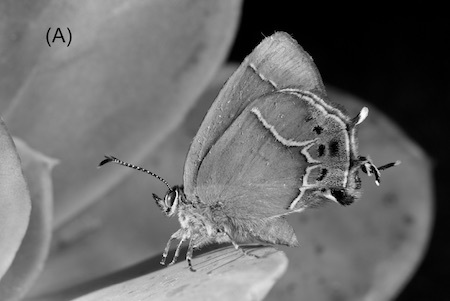A new test of the old idea that apparently having a head at your rear might save your life, if you are a butterfly:
“Two-headed butterfly vs. mantis: do false antennae matter?” Tania G. López-Palafox and Carlos R. Cordero, PeerJ, vol. 5, 2017, e3493. The authors, at Universidad Nacional Autónoma de México, report:

“The colour patterns and morphological peculiarities of the hindwings of several butterfly species result in the appearance of a head at the rear end of the insect’s body…. We explored the role of hindwing tails (presumably mimicking antennae) in predator deception in the ‘‘false head’’ butterfly Callophrys xami. We exposed butterflies with intact wings and with hindwing tails experimentally ablated to female mantises (Stagmomantis limbata)…. [Our study indicates] that at least some aspects of the ‘false head’’ help C. xami survive some mantis attacks, supporting the notion that they are adaptations against predators.”

Published on June 22, 2017 18:43
